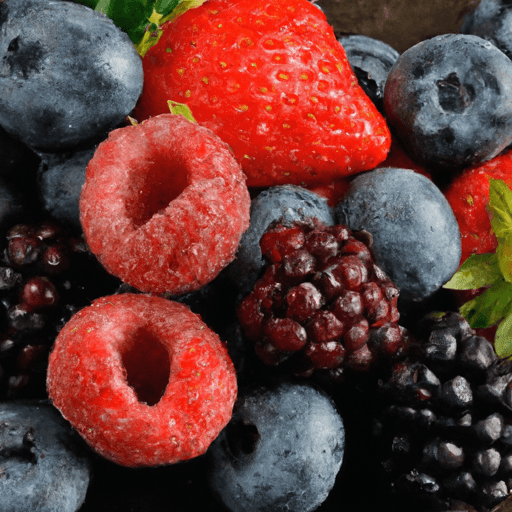All About Berries: A Burst of Flavor and Nutrition
Berries are nature’s little jewels, bursting with vibrant colors, enticing aromas, and delightful flavors. These tiny fruits pack a powerful punch in the world of cooking, adding a burst of freshness and natural sweetness to a wide variety of dishes. Whether enjoyed on their own as a snack or incorporated into both sweet and savory recipes, berries are a versatile ingredient that can elevate any dish they grace.
Taste Sensation
When it comes to taste, berries are truly a sensory delight. Each variety offers a unique flavor profile that ranges from sweet to tart, making them a perfect ingredient for both desserts and savory dishes. Strawberries boast a luscious sweetness with just a hint of tang, while blueberries offer a slightly acidic taste combined with a subtle sweetness. Blackberries and raspberries have a sweet and tart balance that evolves as they ripen, culminating in a burst of juicy goodness.
Versatile Uses in Cooking
Berries lend themselves to a plethora of culinary creations. Here are a few common uses for these delightful fruits:
1. Desserts
Berries take center stage in countless dessert recipes. They can be the star ingredient in classic favorites like strawberry shortcake, blueberry pie, or raspberry cheesecake. Their natural sweetness and vibrant color make them a perfect addition to ice creams, parfaits, and fruit tarts. Additionally, berries can be transformed into decadent sauces, jams, and coulis, which add a delightful touch when drizzled over cakes, waffles, or crepes.
2. Salads
The addition of berries can elevate an ordinary salad into a taste sensation. Their sweet and tart flavors provide a delightful contrast to crisp greens. Strawberry spinach salad, mixed berry quinoa salad, or a refreshing berry vinaigrette dressing can turn a simple salad into a gourmet experience.
3. Beverages
Berries are a fantastic way to infuse flavor into various beverages. From classic berry smoothies and refreshing fruit-infused water to vibrant cocktails like a strawberry margarita or a blueberry mojito, these fruits add a burst of freshness and color to any drink. Additionally, berries can be used to create flavorful syrups for sodas, lemonades, or mocktails.
Nutritional Powerhouses
Beyond their remarkable taste, berries are also nutritional powerhouses. These small fruits are packed with essential vitamins, minerals, and antioxidants beneficial for our health. Here are some key nutrients found in berries:
- Vitamin C: Berries are an excellent source of vitamin C, a powerful antioxidant known for its immune-boosting properties and ability to promote healthy skin.
- Fiber: Berries are rich in dietary fiber, which aids in digestion and helps regulate blood sugar levels.
- Antioxidants: Berries, particularly blueberries, are abundant in antioxidants that protect our cells from damage and reduce the risk of chronic diseases.
- Flavonoids: These compounds, found in berries, have been linked to improved brain function, reduced inflammation, and enhanced heart health.
Including a variety of berries in your diet can contribute to overall well-being and add a touch of natural sweetness to your daily routine.
Fun Facts and History
- Ancient Egyptians used berries for medicinal purposes and as ingredients in their cuisine.
- The term “berry” does not necessarily denote a single type of fruit but includes a wide range of fruits with the common characteristic of having their seeds enclosed within a fleshy wall.
- Strawberries are the only fruit that carries their seeds on the outside.
- Blueberries have long been considered a “superfood” due to their numerous health benefits.
- The average strawberry has approximately 200 seeds.
In conclusion, berries are a culinary treasure. Their tantalizing taste, versatility, and nutritional benefits make them a valuable ingredient in a broad range of dishes. Whether you choose to savor them in sumptuous desserts, refreshing beverages, or vibrant salads, these tiny fruits are sure to delight your taste buds, nourish your body, and add a captivating touch to your culinary endeavors. So go ahead and indulge in nature’s colorful bounty—berries are waiting to be explored!
Berry
Origin: Berries are a diverse group of fruits that can come from a variety of plant families. They are found in different regions around the world, depending on the specific type of berry. Examples of common berries include strawberries, blueberries, raspberries, and blackberries.
Common Uses: Berries are versatile and can be enjoyed in numerous ways. They are delicious eaten fresh, either on their own or as an addition to various dishes. Berries are commonly used in baking, such as in pies, cakes, and muffins. They can also be used to make jams, jellies, sauces, and smoothies.
Nutritional Benefits: Berries are known for their high nutritional content. They are generally low in calories and fat, while being rich in vitamins, minerals, and antioxidants. Different types of berries have different nutritional profiles, but on average, berries are good sources of vitamin C, fiber, and various phytochemicals that contribute to their antioxidant properties.
Unique Properties: Some berries, like strawberries and raspberries, have their seeds on the outside, while others, such as blueberries and blackberries, have their seeds on the inside. Many berries, especially the darker ones, contain anthocyanins, which give them their vibrant colors and have been linked to potential health benefits.
Historical Significance: Berries have been consumed by humans for centuries. In many cultures, they were gathered from the wild and used as a food source. Some Native American tribes have used berries for medicinal purposes, and they have been an important part of traditional diets in various regions. Today, berries are widely cultivated around the world and are enjoyed by millions of people.




Use the share button below if you liked it.
It makes me smile, when I see it.